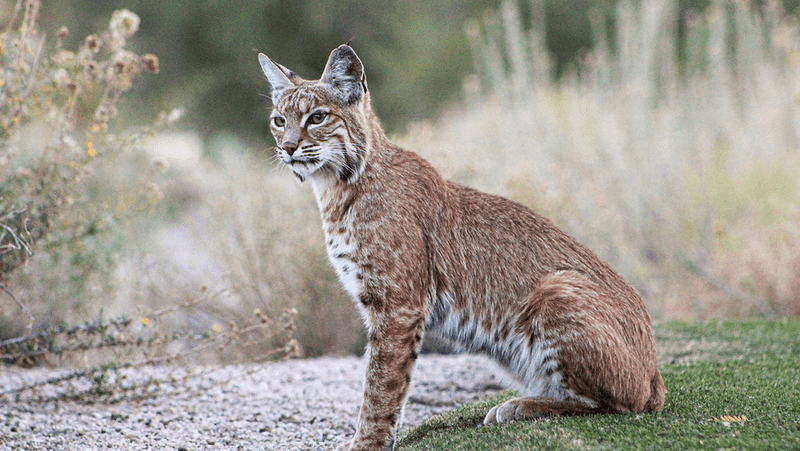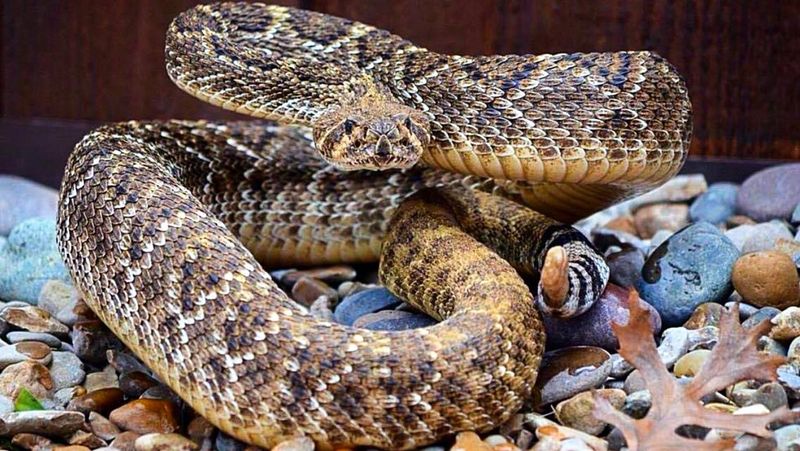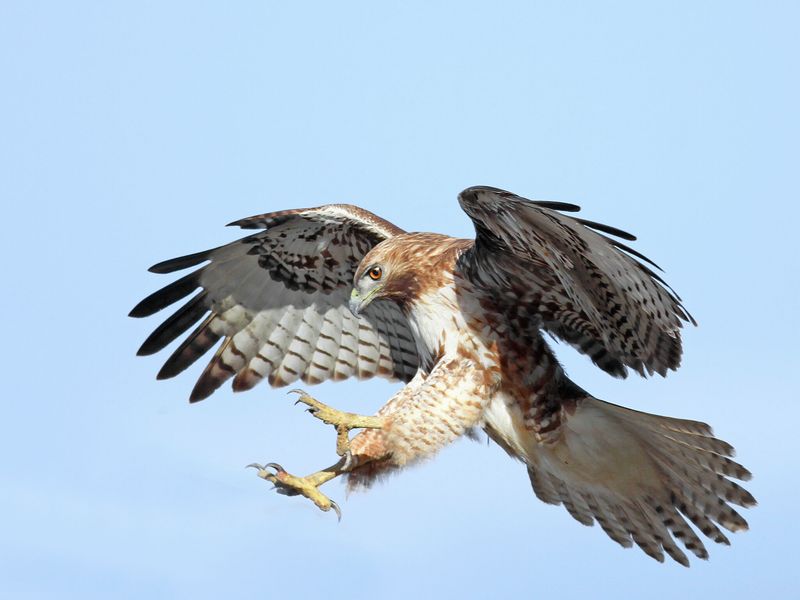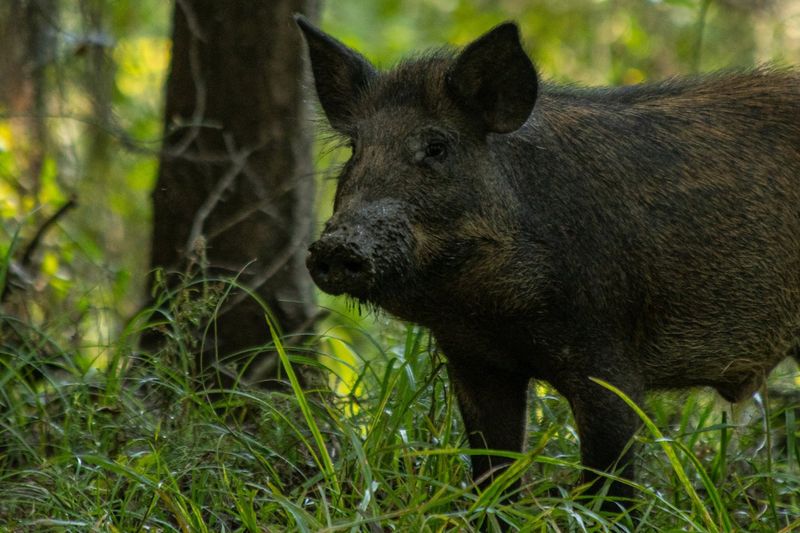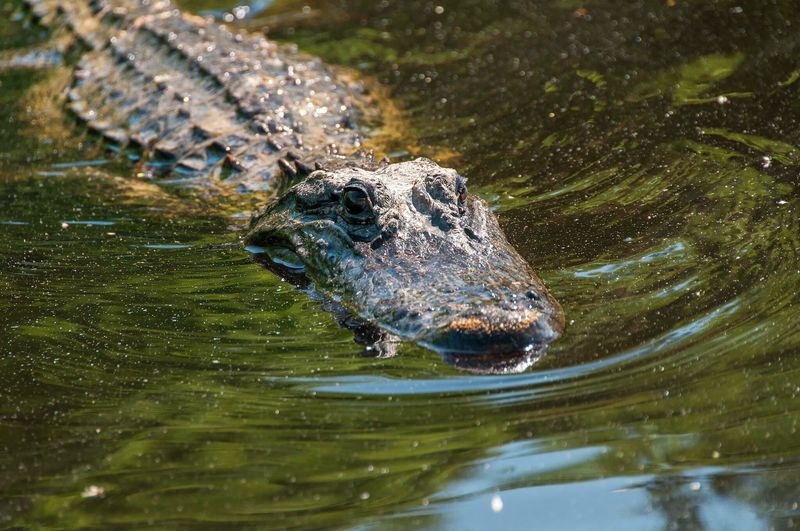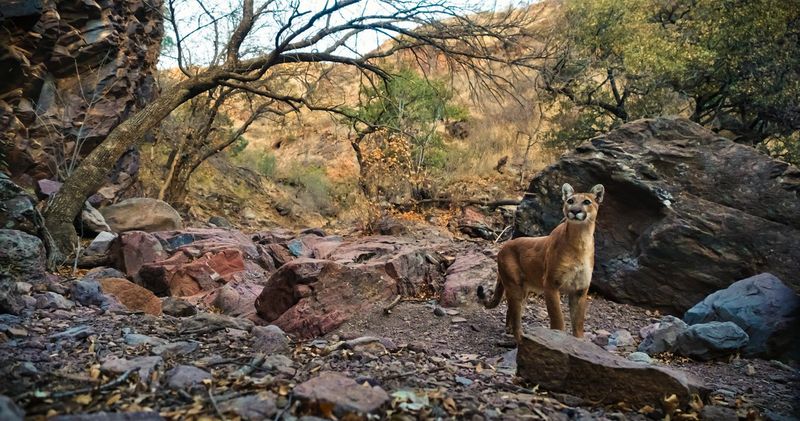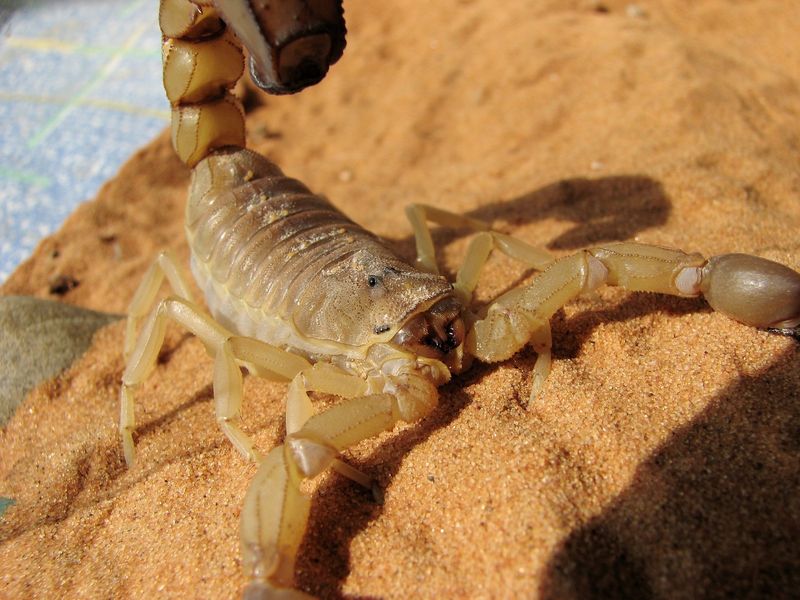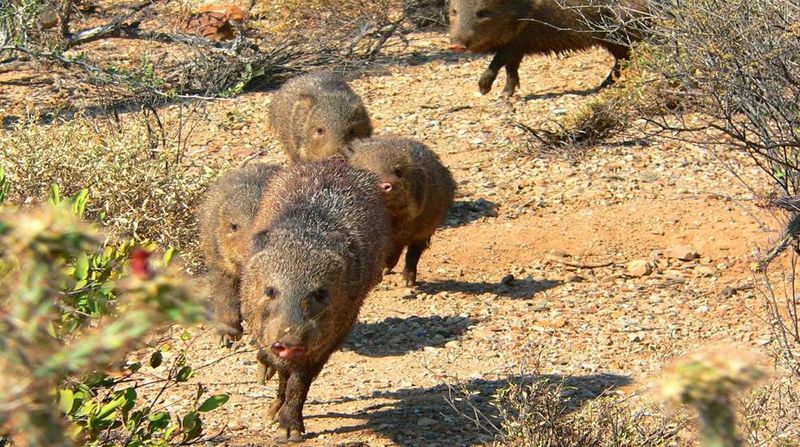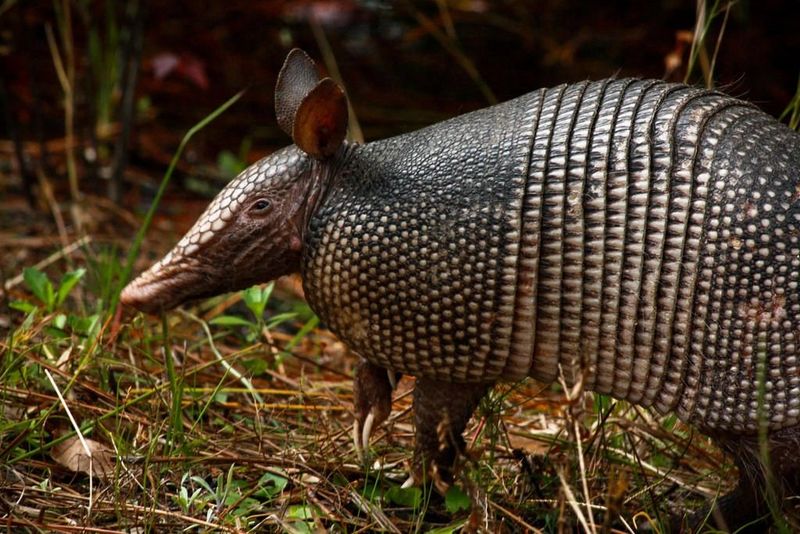In the heart of Texas, a myriad of predators lurk, posing unseen threats to beloved dogs. While the vast landscapes offer freedom, hidden dangers remain a constant concern for pet owners. From vast deserts to dense woodlands, these predators are ever-watchful, waiting for the unsuspecting moment. As guardians of our furry companions, understanding these risks and learning effective protection strategies is crucial. This guide reveals 11 stealthy predators and provides 9 valuable tips to safeguard your dog against these lurking dangers. Stay informed, stay vigilant, and ensure the safety of your loyal friend.
Coyotes
Coyotes, with their cunning demeanor, are frequent visitors in many Texan landscapes. These adaptable creatures find their way into urban areas, making them a common sight near residential neighborhoods. Known for their resourceful hunting skills, coyotes pose a significant threat to unsupervised dogs, especially during the night.
Despite their fox-like appearance, they are formidable hunters, often working in packs to outsmart their prey. Their howls echoing in the night are a haunting reminder of their presence. Pet owners must remain vigilant and ensure their pets are secured, particularly during late hours.
Bobcats
Silent and elusive, bobcats roam the rugged terrains of Texas with graceful precision. Their tufted ears and spotted coats allow them to blend seamlessly into their surroundings, making them formidable hunters.
Bobcats are known for their solitary nature, often stalking their prey with unparalleled stealth. This predatory prowess makes them a concern for pet owners, as unattended dogs can easily become targets. Their presence is often unnoticed until it’s too late. Ensuring your dog is within a safe, enclosed area can deter these solitary hunters from causing harm.
Rattlesnakes
In the sun-kissed areas of Texas, the striking rattlesnake slithers with authority. Recognized by their signature rattling sound, these venomous snakes are to be feared by any unwary pet.
Rattlesnakes often bask in the sun, hidden among the brush, waiting for the perfect opportunity to strike. Their venomous bite can be fatal, making them one of the most dangerous threats to dogs exploring the outdoors. Always inspect your surroundings when venturing into snake-prone areas, and keep your dog leashed to prevent unexpected encounters.
Hawks
With an eye for precision, hawks soar the Texas skies, their sharp vision scanning for potential prey below. These aerial hunters can spot even the smallest movements, making unattended small dogs a tempting target.
Hawks are often seen circling high above, waiting for the right moment to swoop down and capture their unsuspecting quarry. Keeping small dogs under supervision, especially in open areas, can prevent these birds from turning your pet into their next meal. Stay alert to the skies, and consider protective coverings in outdoor spaces.
Feral Hogs
Feral hogs, with their aggressive nature, roam Texas in destructive packs. Known for their razor-sharp tusks, these hogs can pose a severe danger to dogs that cross their path.
These robust creatures often uproot landscapes, leaving a trail of devastation in their wake. Dogs that encounter feral hogs may find themselves in peril due to the hogs’ unpredictable behavior. To protect your pet, avoid areas where hogs are known to frequent, and maintain vigilance during outdoor excursions.
Alligators
In Texas’ swampy regions, alligators lie in wait, their eyes just above the water’s surface. These powerful reptiles are silent and patient predators, ready to strike with explosive speed.
Dogs wandering too close to the water’s edge risk becoming a meal for these lurking giants. Alligators’ camouflage makes them nearly invisible until it’s too late. Keeping dogs away from swampy areas and maintaining a safe distance from water bodies can drastically reduce the risk of encounters with these formidable creatures.
Mountain Lions
The mighty mountain lion, known for its strength and agility, is a rare but serious threat in certain parts of Texas. These solitary predators often roam the rugged hills and are known for their ability to cover great distances in search of food.
Mountain lions, with their powerful build, can easily overpower a lone dog. Their stealthy nature allows them to approach without warning. Pet owners should exercise caution in areas known for mountain lion activity, ensuring pets are kept close and supervised.
Fire Ants
Tiny yet formidable, fire ants are a common nuisance in Texas, known for their painful and relentless bites. These insects can quickly swarm, turning a peaceful outing into a painful ordeal for unsuspecting dogs.
Fire ants typically nest in mounds, and disturbing them can provoke an aggressive response. Dogs curious about these mounds are at risk of being overwhelmed by these tiny attackers. To protect your pet, keep an eye on the ground, avoiding areas where fire ant activity is apparent, especially during warmer months.
Scorpions
In the arid regions of Texas, scorpions roam with their menacing stingers raised and ready. These nocturnal arachnids are known for hiding under rocks and debris, waiting for nightfall to hunt.
For curious dogs digging or exploring, an encounter with a scorpion can lead to a painful sting. While not always fatal, scorpion stings can cause significant discomfort and health issues for pets. Keeping dogs away from rocky or debris-laden areas, especially at night, can help prevent unwanted encounters with these desert dwellers.
Javelinas
Resembling small wild hogs, javelinas are common in the Texas deserts and can be mistaken for their more dangerous relatives. These creatures travel in herds and can be aggressive if threatened or cornered.
While they primarily feed on plants, their defensive nature makes them a risk to dogs that get too close. The presence of javelinas can lead to confrontations, especially if dogs are off-leash. Maintaining a safe distance and ensuring pets are leashed and under control in javelina-inhabited areas is crucial.
Armadillos
The quirky armadillo, while not a direct predator, poses a threat through the diseases it can carry, including leprosy. These armored creatures often dig holes, leading to potential injury for dogs exploring their territory.
Armadillos are primarily nocturnal and can be found scuttling across Texas grasslands at dusk. Dogs that get too curious may find themselves exposed to harmful pathogens. To ensure their safety, it’s important to monitor pets during dusk and dawn, avoiding areas with visible armadillo activity.


